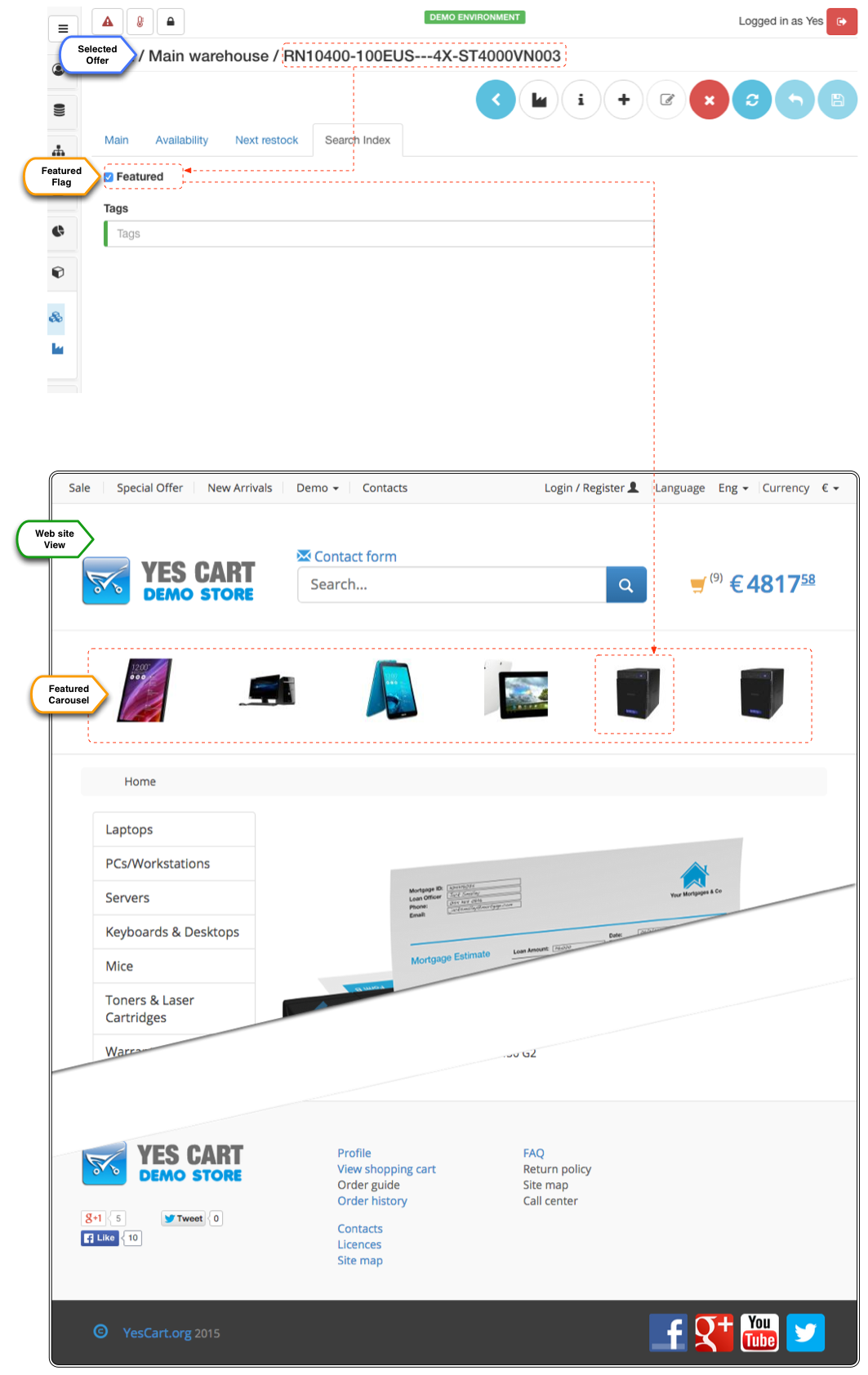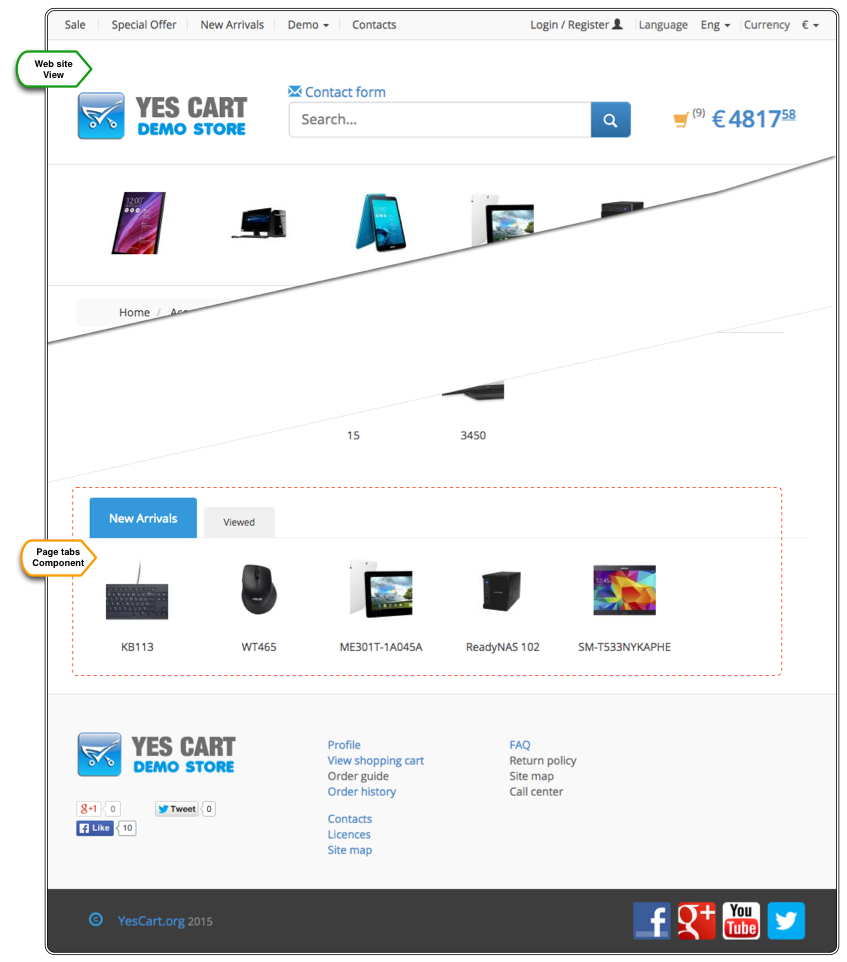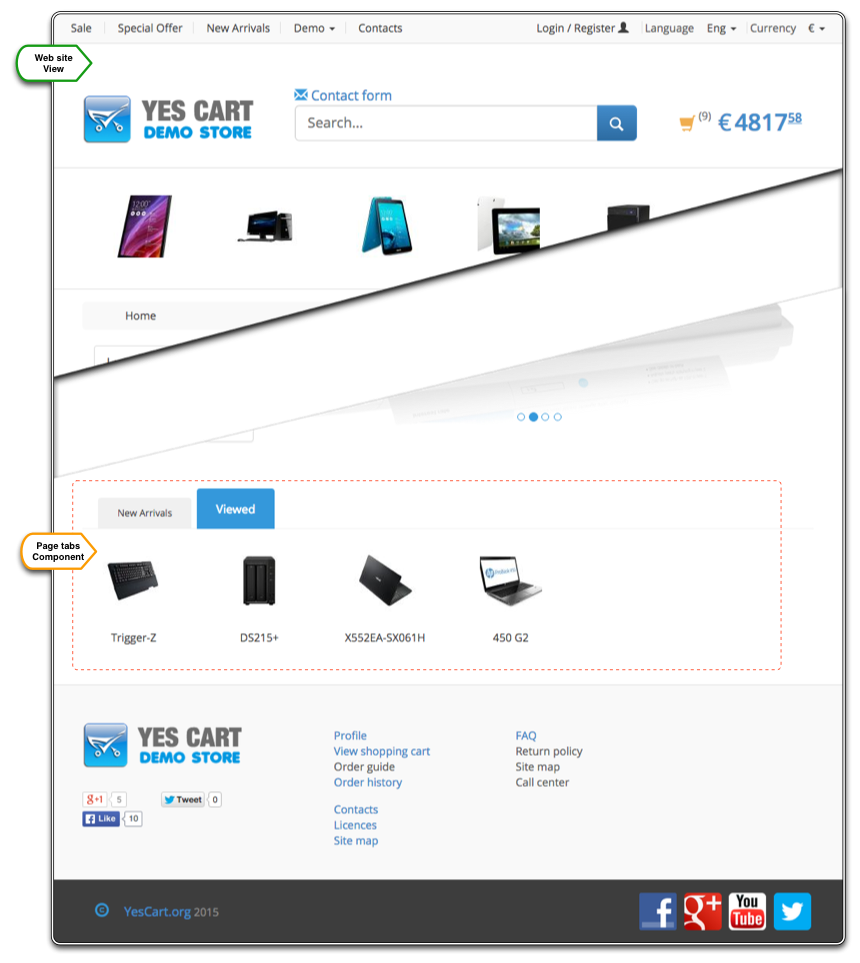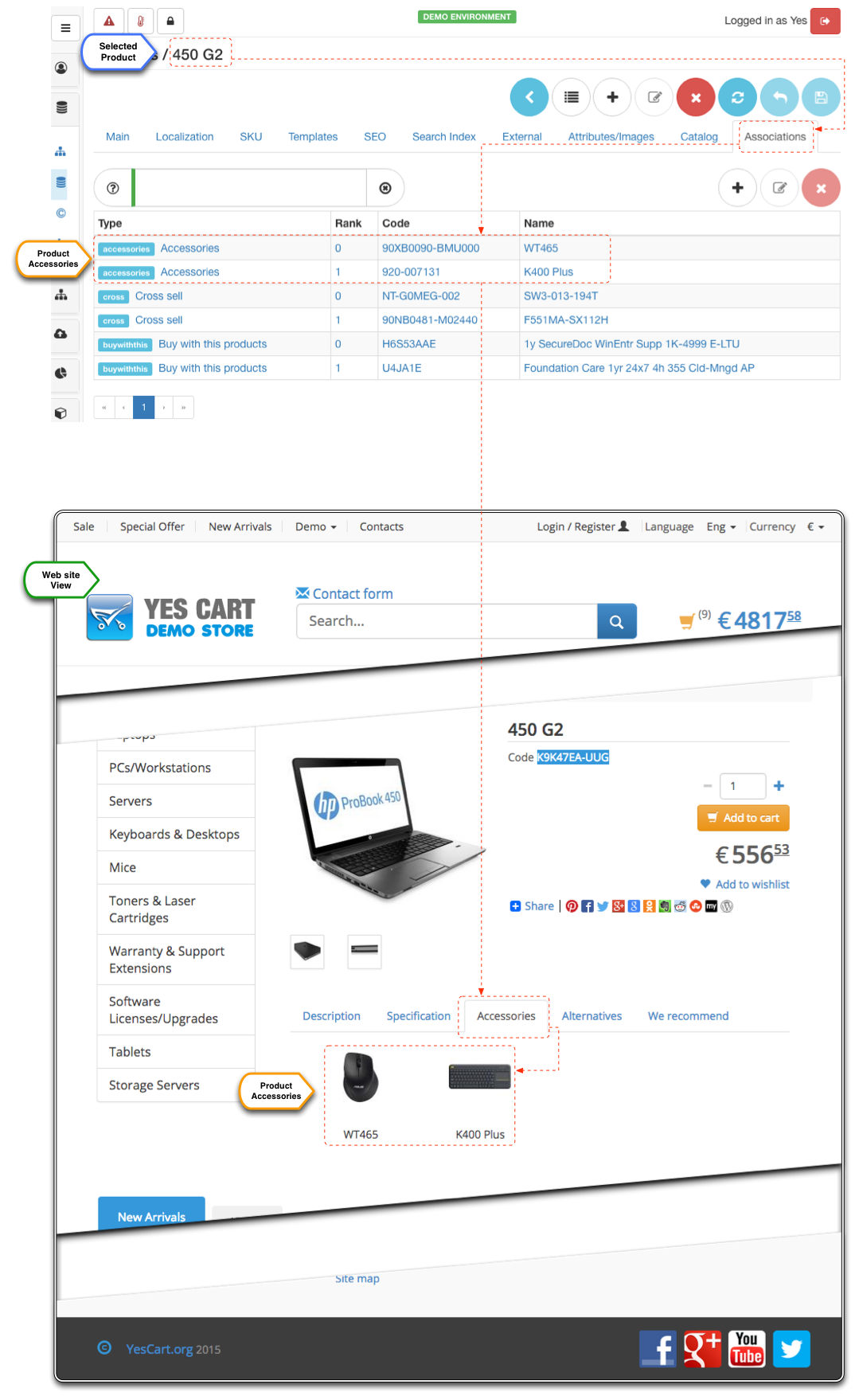Product Tags
Tags provide additional level of categorisation and grouping of products and can be used for full text search purposes. Tag URLs are SEO friendly and can be provided to customer on a web site menu or as a content include link or in an email newsletter (see CMS ). When tag URL is accessed the list of products that contain that tag will be presented to the customer in the same way as any other navigation attribute.
Tag URL format
http://www.shop.com/yes-shop/tag/[tag] # Demo store live example http://demo.yes-cart.org/yes-shop/tag/sale
Note that tag URL can be combined with any other navigation term. For example to narrow the use of tag to a category URL of the following form can be used:
Tag URL format
http://www.shop.com/yes-shop/tag/[tag] # Demo store live example http://demo.yes-cart.org/yes-shop/category/notebooks/tag/sale
Furthermore tags are contributing to breadcrumbs thus making tag navigation visual and easy to understand.
Each product tag is a single word and there can be many tags specified for a single product. Tagging can be used for many different purposes: defining a collection of products for sale, products with specific feature, bringing together related products, clearance etc. Demo store uses this feature extensively for products sales, special offers, demonstration of multi buy, accessories features and many others in the main navigation at the top of the site.
Figure 1: Example 'sale' tag
Featured products
One of the strategies to promote specific products is to place them in a very visible place on the web site. Default theme provides featured products carousel for this purpose, which is located at the top of the page. To mark any product as featured all that is required is to set the featured flag in the product editor 3.6.0 or on offer in the inventory editor 3.7.0+ . Featured products list is category driven and will display products from the currently viewed category. The maximum number of elements is configured at category level using CATEGORY_ITEMS_FEATURED attribute with default fallback set to 15. The anticipation is to keep this list short to keep customer focused on the products that need to be highlighted.
Figure 2: Example featured product configuration
New arrivals
New arrivals list is an efficient way to provide stimulus to the existing customers and communicate long-awaited products. This type of recommendation is especially effective in fashion industry whereby items from new collections can be brought forward to the customer.
In terms of the platform new arrivals can be specified automatically via product data creation timestamp 3.6.0 or offer data creating timestamp 3.7.0+ and manually by tagging products, SKU or offers with special "newarrival" tag.
Automatic new arrival detection is driven by number of days offset defined either at category level using CATEGORY_NEW_ARRIVAL_DAYS_OFFSET category attribute or at shop level using SHOP_NEW_ARRIVAL_DAYS_OFFSET attribute. The maximum number of elements is configured at category level using CATEGORY_ITEMS_NEW_ARRIVAL attribute with default fallback set to 5.
New arrivals products list is category driven and will display products from the currently viewed category. Manual configuration using new arrival tag on the product has higher priority than automatic one, so these items are more likely to appear in the list. We recommend to use tag with "newarrival" only for few specific products to allow the automatic detection build true new arrivals list. The tagging facility is there only to adjust the marketing strategy (E.g. tag new iPhone when it comes out so it is at the top of the list).
Default theme allows to view new arrival product in the page tabs component.
Figure 3: Example new arrival tab
Recently viewed
As well as providing customer with recommendations of what they could look at it is always good to remind them of what they already viewed. In most cases suggesting to look at the product again may be the tipping point for the sale.
Cart API automatically tracks product page views and keeps track of 10 last viewed products. This setting is platform wide and can be adjusted according to business needs. The list is constantly maintained with the unique collection of latest products.
Default theme allows to view recently viewed product in the page tabs component.
Figure 4: Example recently viewed tab
Associations
As discussed in the PIM documentation each product can have multitude of associations each of which can have a type to identify a business purpose of this link. For example accessories define products that can enhance features, improve look or better usage experience, whereas up-sale and cross-sale could define alternatives to given product.
Each type of link can provide very valuable information especially to first time or non-professional buyers. Consider elderly person purchasing a personal computer or typical home owner shopping for refurbishment tools to attempt their first DIY. Association provide unique opportunity to support these kind of customers with a professional insight, which may turn unsure buyer into a determined one.
Default theme utilises multiple tabs on the product page to list the association of the appropriate type. These tab will become available automatically if associations exist and they are orderable (i.e. offer is available for given shop).
We recommend thorough review of how these associations are presented when creating your custom themes as how this information is presented will greatly influence the magnitude of the effect it will have on the customer.
Accessories can be used to specify additional products that complement current product to enhance its style, features or technical specification.
Alternatives represent other products with similar features (cross sell), cheaper products comparable to current one or more expensive feature rich high end brand products (up sell).
Recommendations represented by "buy with this" type associations and can specify additional options or recommendations. For electronics this could be warranties or typical software packages for operating system. For fashion this could represent a "complete look" such as matching dress, shoes, hand bag etc when looking at any particular product in this set. How exactly this type of association is used will depend on the nature of business and marketing strategy.
You may add custom types which will be used with your shop's theme to enrich customer experience.
Consider the following example on the demo store: 450G2 laptop for which keyboard and mouse accessories where specified.
Figure 4: Example accessories




